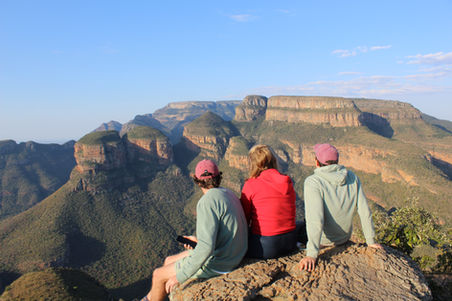
Accommodation
Long-term | Endangered Species Wildlife Volunteer

About the Accommodation
Where
Located in the Waterberg region of South Africa. The 37,500 hectare reserve is part of the UNESCO Waterberg Biosphere Reserve. Home to over 5000 species of plant and endangered animals such as the black rhino.
The Camp
You will stay in a remote bush camp, secluded at the heart of the reserve and the African bush. There, you'll live and work alongside your fellow volunteers, biomonitoring officers and guides.
Bedrooms
Rooms are same-sex fixed base canvas tents, sleeping 2-4 people. Each room will have all the amenities you might need: beds with bedding, blankets and towels, shelves and power points to charge cameras and phones.
Communal Area and Kitchen
There is a communal area, where your guides will work with you each day to help plan which conservation activities you'll participate in, and when. Furnished with plenty of hangout spots and relaxation areas, you'll be able to relax and socialise together in your downtime.
The communal kitchen is where you'll take turns cooking meals, when the guides aren't treating you to a traditional BBQ (or braai, as it is locally known). These are a common social occurrence and take place outside.

Your camp can be found secluded in the heart of the bush.

There are many communal areas for you to relax and socialise with other guests.

Live and work with animals, get to know them as you help protect them and the habitat they live in.

Your camp can be found secluded in the heart of the bush.
On-site Amenities
On-site Activities
Most of your leisure time will fall between and after activities. You can spend this time socialising around the camp, swapping stories about your day and getting to know your fellow group members.
Board games, ball games and cards are popular during downtime, so feel free to bring a few games. Another popular activity is observing the various animals in your surroundings, or comparing photos and notes.
Phone and WiFi
The site itself is quite remote and although there is phone signal it does come and go.
For those who wish to purchase their own South African SIM card and phone, you will have a chance to do so during your arrival at the airport.
There is a Wi-Fi and cell signal booster in camp for you to keep contact with friends at home.
Laundry
There is an on-site launderette which you will be able to access, so you can keep your clothes fresh and clean - and ready to get mucky again during conservation work!
Fencing and Security
Although the site is fully fenced off to keep a comfortable and safe barrier between animals and humans, for the sake of both parties please be mindful that you are still on a reserve.
Animals such as antelope, baboons and warthogs sometimes like to visit camp. If and when this occurs, your guides will explain any health and safety concerns. They will also chat to you about the behaviour of the animals, to ensure that you are comfortable with their presence and understand how to co-exist with them.
At least one guide will be with you at all times while you are on-site. Although the place is well illuminated at night, please do stay vigilant and please bring a torch!
Rules and Respect
The site itself is your home, so please treat the place well. Please also treat the other guests and staff who share the camp with you with the respect they deserve, and you will be treated likewise.
Equally, be mindful that you are on a protected reserve. Anyone found making a mess, damaging the environment or littering risks a stern talking-to from your safari guides!
About the Reserve
What Can You Expect to See?
The Waterberg region is made up of granite and sandstone rocky escarpments, flat open plains (savannahs), and thick bush cut by rivers, some of which are seasonal. This diverse environment is home to many species of iconic African wildlife such as antelope, giraffes, warthogs, zebras, and predators such as hyena. You can also expect to see and learn about many species of reptiles, birds and other smaller mammals.

































